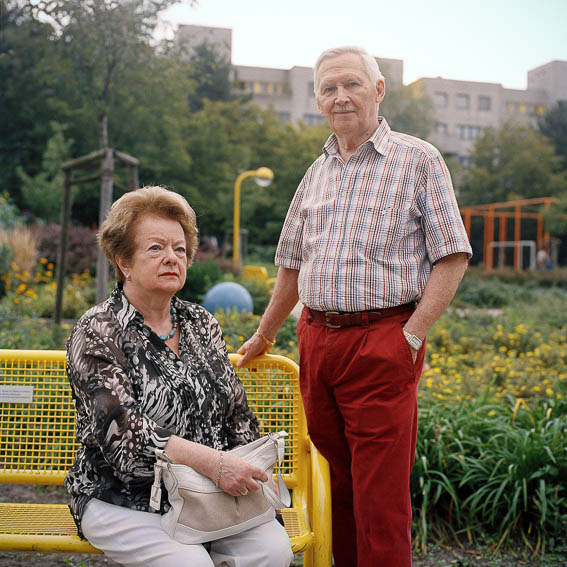[dropcap type=”1″]T[/dropcap]amara, How would you describe yourself as a photographer?
I’m an old fashioned photographer in many ways. I still use film, sometimes a large format camera. Research before and during a project is a large part of it – I go to archives, interview people, have conversations. Hence, text and words play a crucial role in my work. I think a lot about what it means to represent a person in a photograph as I’m very interested in taking portraits. At the same time, my photographic projects feature objects, landscapes, buildings and streets… So, really, I’m trying out new ways of telling stories, playing with how narratives are constructed.
Do you have some themes or subjects you are particulary interested in?
I’m very interested in the street and in the city, especially public spaces. How do people relate to the places they inhabit and use? I think about how history might have shaped a place, but also how places shape history in different ways. I’ve been specifically interested in what is called ‘multicultural’, both in Germany and in London, how migration and identities are negotiated in a place of multiple cultures and histories.
Which is the most important thing you learned from beeing a photographer?
Speaking to strangers and keeping it simple. For me, photography is about engaging with the world, in the world. This is what I love about it. To use a camera is fairly simple, I think. It’s how it’s used, what you’re trying to achieve.
How do you approach the people we see in your pictures?
It really depends. A lot of the portraits are brief encounters which really actually make my day when I’m walking and photographing. I find it very interesting to approach strangers and take their pictures. And I have had some really wonderful encounters, meeting someone briefly, getting to know this person in a very short time but in a very special way. I have made friends by taking photographs of strangers, friends I’ve had for years and years. I never take photographs without asking and I try to keep a conversation going.
How long does it take for you to work on a specific project?
On my current project, I have worked on and off for six years which is a long time. Others have been weeks or months. There are benefits for both. Maybe depending what it is about.
Do you take inspiration form the works of other photographers?
Yes, I do! But not necessarily professional photographers. I take inspiration from archival material, photographs from newspapers, family shots, old photographs. In my current project I was inspired by photographs of street market postcards of London in the late 19th century. But there are also photographers of books and exhibitions who have inspired me.
Is there any photographer you particulary refer to?
August Sander has been important, his approach of documenting a society and a time through portrait photographs. And Walker Evans’ documentary approach to people’s realities. Yto Barrada and Melanie Machot’s work I find very inspiring, it hovers between different media, one of them photography, with a strong focus on documentary, community and the portrait.
Do you shot in film?
Yes, I do. I definitely like using different formats and cameras and I always prefer film when I take portraits. It slows down the process and makes it more unique. Each camera changes how you take photographs. I use digital, too although for me, this is a very different process.
Some of your projects are square pictures, is there a particular reason you choose this?
My dad gave me his old Rolleiflex medium format camera when I applied to study photography at university. This camera takes square images, 6 x 6 cm. I used it for a good number of years constantly and liked it very much.
Which is the photography project you have always dreamed about?
A very long road trip, with a car full of film and a good companion
Are you working on new projects?
Yes, I am. I have photographed a street market in London for some years now and I’m in the process of making a book with photographs and words based on conversations and stories from traders and customers alike. I should finish in 2018
Tamara Stoll is a photographer and artist based in Leipzig, Germany and London, UK. She works on portrait commissions, independent projects and as a workshop facilitator with different groups and communities. Tamara’s practice features photography text, and book making. The archive, the interview and the encounter play a crucial role in her working process.
Recent activities include group exhibitions at KUB Galerie (‘Im_Mobilites’, 2017) and at Grassi Museum (In/Between, 2016) in Leipzig, workshops in co-operation with Interaction Leizpig e.V. and ‘Walking Between Streets in the Sky’, a collaborative publication with James Lander, funded by UAL London in 2017.
Tamara Stoll gained a first class honours in Photography at London College of Communication, University of the Arts, London in 2012 and is studying a MA at the Academy of Fine Arts, Leipzig under Professor Tina Bara.
Interview by Nicolò Bernardi















